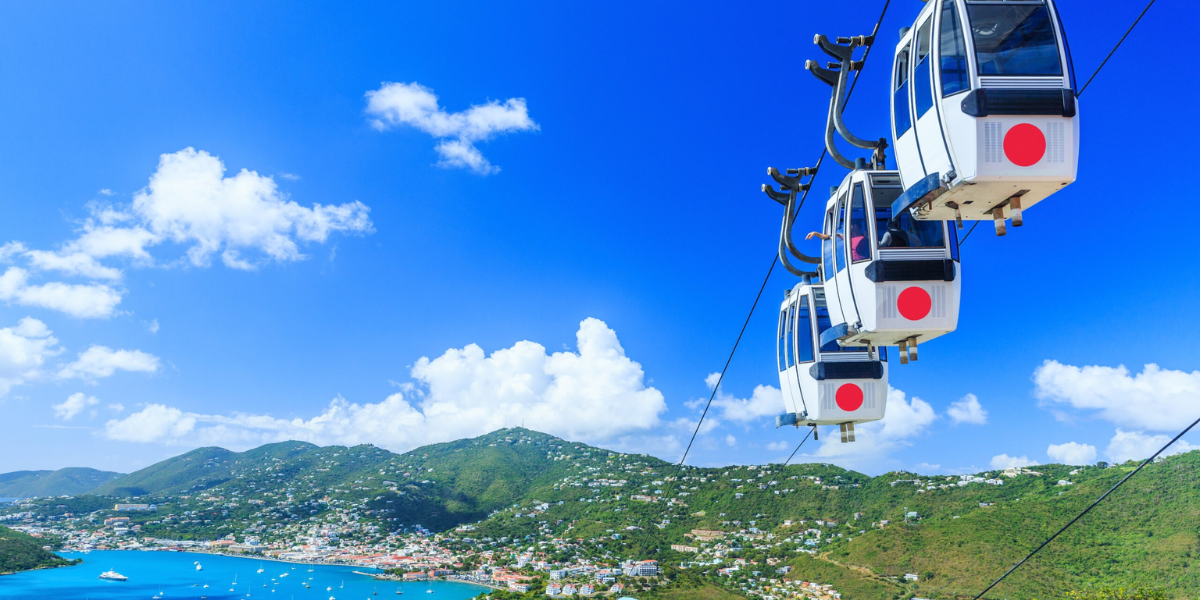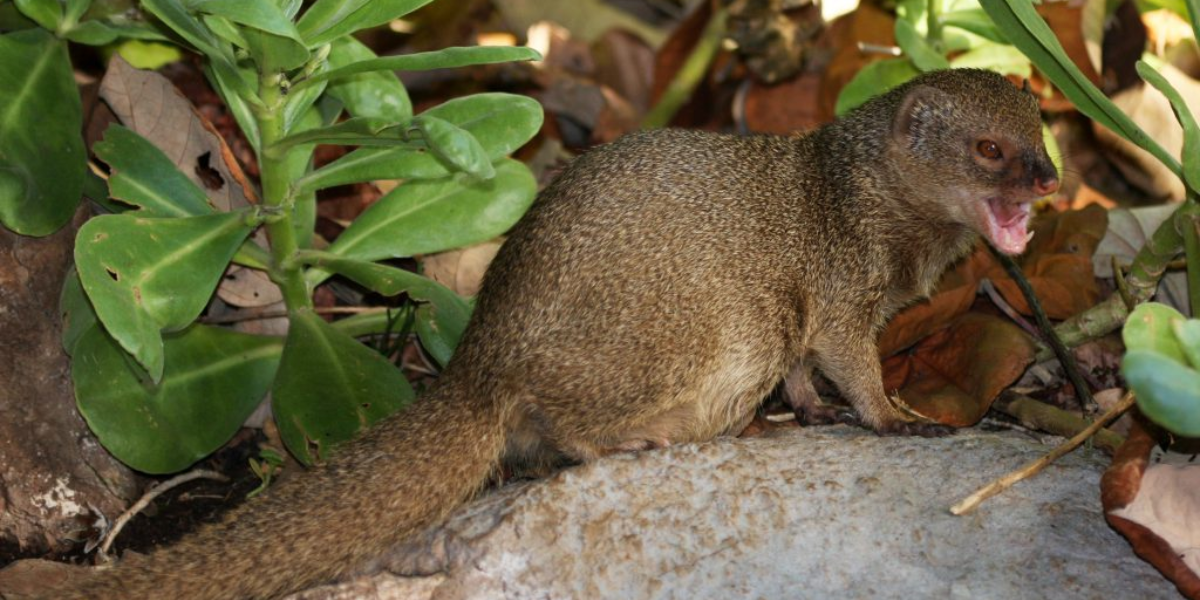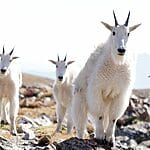10 Interesting Animals in Puerto Rico – You Might Not Know
Puerto Rico is a Caribbean island, there are many interesting animals in Puerto Rico. From lush rainforests to coastal ecosystems, the island is home to a diverse range of species, both endemic and migratory.
Some of Puerto Rico’s most interesting animals include the critically endangered Puerto Rican parrot, an emblematic bird with vibrant plumage, and the elusive Puerto Rican boa, a rare serpent found in the island’s dense forests.
10 Interesting Animals in Puerto Rico – ( With Interesting Pictures & their Conservation Status)
With a unique blend of tropical and subtropical climates, Puerto Rico also hosts various endangered and critically endangered species. Such as the leatherback and hawksbill turtles, contributing to the ecological significance of coastal regions. Apart from these, we have gathered the 11 most interesting animals in this blog that you might not heard about.
Hawksbill Turtle and Leatherback Sea Turtle – Critically Endangered Species
In the warm coastal waters of Puerto Rico, the Hawksbill Turtle (Eretmochelys imbricata) and Leatherback Sea Turtle (Dermochelys coriacea) represent critical elements of marine biodiversity. Both species are categorized as “Critically Endangered” by the IUCN.
Leatherback Sea Turtle
The Leatherback Sea Turtle (Dermochelys coriacea) stands as the largest and most ancient of all sea turtle species, its lineage tracing back over 100 million years. Renowned for their unique leathery shells and capacity for deep dives, leatherbacks can plunge to remarkable depths in pursuit of their primary prey—jellyfish.

As highly migratory species, they frequent coastal areas for nesting, with females returning to the very beaches where they hatched. Leatherback mating behavior is a spectacle of nature, involving intricate courtship rituals at sea.
Did You Know Leatherback Sea turtles are the largest living turtle and the only sea turtle without a hard shell.
Hawksbill Turtles
Hawksbill Turtles, with their distinctive hawk-like beaks and beautiful shell patterns, frequent coral reefs, play a vital role in maintaining the health of these ecosystems. These interesting animals in Puerto Rico are the largest of all sea turtles. They are known for their unique leathery shells and predominantly feed on jellyfish.

These interesting animals in Puerto Rico often travel vast distances across oceans to reach their breeding grounds. Their mating occurs at sea, but the females return to sandy beaches, often the same ones where they were hatched, to lay their eggs.
Despite conservation efforts, their populations continue to face threats from habitat loss, fishing bycatch, and illegal trade (for Hawksbills, particularly their shells). Ongoing initiatives in Puerto Rico aim to protect nesting sites and reduce human impacts, vital for the survival of these enigmatic marine giants.
Puerto Rican Parrot – Native Parrot
The Puerto Rican parrot (Amazona vittata) are interesting animals in Puerto Rico, that live in the lush landscapes of Puerto Rico. Once on the brink of extinction, these vibrant green birds with striking red foreheads are primarily found in the Caribbean National Forest, El Yunque.

The puerto rican parrot has monogamous mating behavior, in which the pairs often stay together for life, showing intricate bonding rituals and sharing responsibilities like nurturing their young.
However, the Puerto Rican parrot’s population has faced dramatic declines, primarily due to habitat destruction, leading to its classification as critically endangered on the IUCN red list.
In response, the Puerto Rican Parrot Recovery Program was established, focusing on conservation efforts like captive breeding and reforestation.
Puerto Rican Boa – Endangered Species
The Puerto Rican Boa (Chilabothrus inornatus), an endemic yet endangered serpent of Puerto Rico, is a captivating example of the island’s unique wildlife. Preferring the humid, lush environments of the island’s forested regions, these boas are often found in caves, coiled in the canopy, or near rivers.

Interestingly, these boas exhibit a rare reproductive behavior called ovoviviparity, where they give birth to live young instead of laying eggs, a rarity among snakes. During mating season, they can be observed engaging in complex mating rituals, often involving multiple males vying for a single female.
With a population that remains under pressure, the Puerto Rican Boa is classified as “Endangered species” on the IUCN Red List of threatened species. Conservation efforts are focused on habitat protection and public education to prevent further decline of this remarkable species,
Puerto Rican Racer
The Puerto Rican Racers are interesting animals in Puerto Rico, and are characterized by varying coloration from brown to olive green. They thrive in the humid, dense forests of the island, such as the Toro Negro State Forest and El Yunque National Forest.

These habitats offer the essential cover and prey diversity they need for survival. The Puerto Rican Racer, primarily diurnal, has a unique mating behavior where males compete for females through a display of strength and agility, often during the rainy season.
The species, however, faces significant threats due to habitat loss and predation, leading to a concerning decline in its population.
As a result, Puerto Rican Racers are currently listed as an “Endangered species” on the IUCN Red List. Conservation efforts are imperative to protect their natural habitats and mitigate threats, ensuring the survival of this distinct species.
Virgin Islands
The Virgin Islands, archipelago in the Caribbean, boast a diverse array of wildlife that contributes to its enchanting allure. The islands are home to a variety of bird species, including the Bananaquit, Brown Pelican, and the critically endangered Yellow-shouldered Amazon Parrot.

Additionally, the islands’ terrestrial habitats are also inhabited by lizards, hermit crabs, and land birds like the Pearly-eyed Thrasher. Preservation efforts, including national parks and protected areas, contribute to sustaining this unique ecosystem.
Underwater ecosystems surrounding the Virgin Islands harbor vibrant coral reefs teeming with marine life, from colorful reef fishes to sea turtles. This rich biodiversity, coupled with pristine beaches and crystal-clear waters, makes the Virgin Islands a paradise for nature enthusiasts and snorkelers.
Puerto Rican Screech Owl
The Puerto Rican Screech Owl (Megascops nudipes), a distinct nocturnal bird, and an integral part of Puerto Rico’s rich biodiversity. These owls primarily inhabit subtropical or tropical moist montane forests, often thriving in dense vegetation where they can effectively camouflage.

They are one of the most interesting animals in puerto rico, and are monogamous in nature. These owls engage in duet calls during the breeding season, which serve as a means of strengthening pair bonds and defending their territory.
The Puerto Rican Screech Owl is listed as “Least Concern” on the IUCN Red List. However, they face threats from habitat loss and fragmentation. Continuous conservation efforts and habitat protection are vital to maintain their population and ensure their survival in the ecosystems.
Puerto Rican Crested Toad – Critically Endangered Species
The Puerto Rican Crested Toad (Peltophryne lemur) is a unique amphibian species endemic to Puerto Rico, captivating with its distinctive appearance. This toad primarily inhabits arid and coastal areas, favoring limestone karst regions and tropical dry forests.

During the mating season, these toads engage in amplexus, a behavior where the male grasps the female from behind to facilitate the release of eggs as he fertilizes them. Sadly, the species has faced significant habitat loss due to urbanization and agricultural activities.
Classified as “Critically Endangered” by the IUCN, the Puerto Rican Crested Toad has encountered challenges such as habitat degradation and the introduction of invasive species. Conservation initiatives, including captive breeding programs and habitat restoration, play a pivotal role in reversing their population decline.
Mona Island Iguana – Lizard Species
The Mona Island Iguana (Cyclura stejnegeri), a striking and formidable reptile, is indigenous to Mona Island, a small and rugged island off the west coast of Puerto Rico. This species thrives in Mona’s unique environment, characterized by dry forests and coastal scrublands, replete with caves and rocky outcrops.

The Mona Island Iguana, like other Cyclura species, exhibits fascinating mating behaviors, including elaborate courtship displays by males to attract females. These displays involve head bobbing, body inflation, and other visual cues. Females then lay eggs in nests dug into sandy or soft soil, a critical part of their reproductive cycle.
These interesting animals in Puerto Rico are categorized as “Endangered Species” by the IUCN, the population of Mona Island Iguanas is under significant threat due to habitat loss, invasive species, and human disturbance. Conservation efforts, including habitat preservation and invasive species control, are crucial for protecting them.
El Yunque National Forest
El Yunque National Forest, a tropical treasure in Puerto Rico, is renowned for its extraordinary biodiversity and the distinction of being the only tropical rainforest in the U.S. National Forest System. Widespread over 28,000 acres, it’s a vibrant ecosystem that hosts a remarkable variety of wildlife.

This lush landscape is home to the critically endangered Puerto Rican Parrot, a symbol of the island’s natural heritage. The forest’s dense foliage echoes with the unique calls of the Coquí frog, an iconic Puerto Rican species. Additionally, El Yunque is a haven for numerous bird species, including the Puerto Rican Tody and the Broad-winged Hawk, making it a paradise for birdwatchers.
The forest also supports a myriad of insect species and rare flora, including orchids and giant ferns, which thrive in its humid, mist-laden environment. El Yunque’s rich biodiversity is a living showcase of the ecological wonders found in tropical rainforests, making it a crucial area for conservation and environmental education
Coquís Frogs – Critically Endangered species
These small amphibians, named for their distinctive “ko-KEE” call, are not just one species but a group of over 17 species, all native to Puerto Rico. Coquí frogs inhabit a range of environments across Puerto Rico, from humid mountain forests to dense lowland areas, showcasing remarkable adaptability.

Their interesting mating behavior includes perching on leaves or twigs, belt out their signature calls to attract mates and defend their territory. The higher the pitch and frequency of their “co-quí,” the larger and healthier the male is perceived to be by females.
Unfortunately, their charming song is becoming increasingly rare. Once numbering in the millions, coquí populations have dwindled due to habitat loss, climate change, and introduced predators like the mongoose.
Their present IUCN status is “Critically Endangered,” highlighting the need for conservation efforts to safeguard these musical marvels.
West Indian Mongoose
The West Indian Mongoose are interesting animals in puerto rico and invasive species in Puerto Rico. They posed a significant threat to the island’s native fauna. They were originally introduced to control rat populations in sugarcane fields, these small carnivores now inhabit a variety of environments, from forests to urban areas.

Their adaptable nature has made them particularly successful in colonizing diverse habitats. Despite being classified as an invasive species, West Indian Mongooses exhibit typical mating behaviors, with breeding occurring during specific seasons. Females give birth to litters of several pups, contributing to their population growth.
However, their presence has led to detrimental impacts on local wildlife, including predation on ground-nesting birds and reptiles. As a result, the West Indian Mongoose is considered a threat to biodiversity. They are listed as the “Least Concern” on the IUCN Red List.
Additionally, their impact on native ecosystems underscores the importance of managing and mitigating the invasive species issue in Puerto Rico.
Frequently Asked Questions about Interesting Animals in Puerto Rico
Are there any dangerous animals on Culebra Island, Puerto Rico?
Fleas, Spiders, Snakes, Scorpions, Sharks, Caimans, Lionfish, Giant centipede, Box Jellyfish are dangerous animals on Culebra Island, Puerto Rico.
What is the most special animal in Puerto Rico?
Common coquí is the most special animal in Puerto Rico.
What is Puerto Rico’s signature animal?
The coqui, a small tree frog, is national animal of Puerto Rico.
Does Puerto Rico have exotic animals?
Puerto Rico has several non-native or introduced animal species, some of them are West Indian Mongoose,Cane Toad, Black Rat, Green Iguana, and Norway Rat.
What animal is only found in Puerto Rico?
Puerto Rican parrot, and Puerto Rican owl are animals only found in Puerto Rico.
- What Should I Do If A Koala Bites Me? Safety Guide - 2024-05-30
- Are Kangaroos Born Without Hind Legs? A Fascinating Journey - 2024-05-30
- Animals That Look Like Squirrels - 2024-05-30









